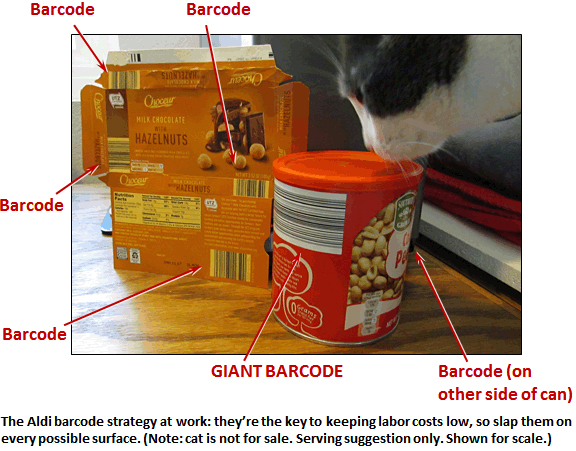In a desperate last-ditch attempt to avoid Donald Trump for an extra few minutes, I stopped into our shiny new Aldi store after lunch. Aldi is—well, let’s back up a second. There are actually two Aldis: Aldi Süd and Aldi Nord. Why? Because in a very Dallas-esque maneuver1 about half a century ago, the Aldi brothers decided to split their business in half. After expanding throughout Europe, Karl then proceeded to open up Aldi in the Eastern US in 1976 and Theo bought Trader Joe’s on the West Coast in 1979. TJ’s is famous for smallish stores, lots of private labels, and high-quality food. Aldi is famous for smallish stores, lots of private labels, and rock-bottom prices.
Anyway, Aldi has finally made it to Southern California, so I checked it out. The vibe is sort of like an HO-scale Costco except without any actual employees anywhere. The brand strategy reminded me of Radio Shack back in the day. At Radio Shack, everything was private label, but there were lots of different labels: Realistic, Micronta, Archer, etc. Aldi is the same: nearly everything is private label, and there are lots of different labels: Clancy’s for snacks, Lifeways for allegedly healthy foods, and—my favorite—Welby for drugs. The packaging itself is such a brazen ripoff of major brands that I’m surprised they can get away with it. But I guess they do.
While I was there, I bought some Choceur chocolate (I had to buy something, didn’t I?) and some Southern Grove peanuts. I’m forced to admit that they were pretty good—at about half the price I’m used to paying.2 The store I was at had a grand total of one (1) checker, which I gather is standard, but holy cow was she fast. The key, apparently, is to put large UPC codes on literally every surface of the packaging, so that checkers can just slide stuff over the scanner at light speed. This works fine since the packaging is all controlled by Aldi and doesn’t have to be used to attract customers. You want potato chips? You’re going to buy Clancy’s.
So that’s my report. I won’t pretend it was very interesting, but it accomplished my purpose. I’ve now avoided Trump for yet another hour or so.
1Fans of the show know what I’m talking about. The rest of you can go here to watch one of the greatest scenes ever on network TV.
2Of course, my local store is Gelson’s. But Aldi’s stuff is still cheap, even compared to a normal supermarket.
















